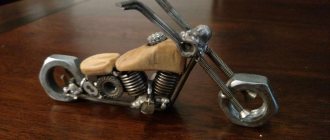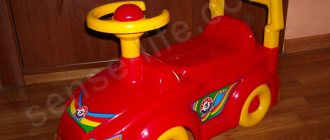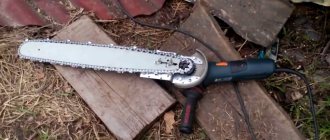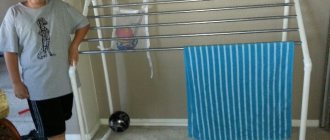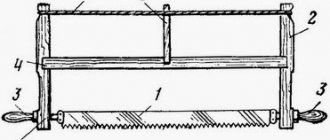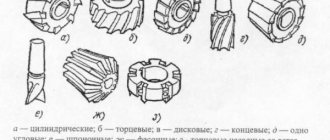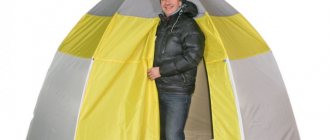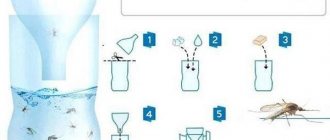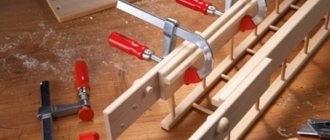Kindling usually refers to special liquid chemical compositions used to start a fire. As a rule, lighter fluid sold in stores is used to start a fire on a picnic or a short trip to nature. By this word we will generally understand any means that help light a fire, including tinder and kindling.
Fire ignition can be liquid, gas, solid, industrially or manually made, of natural and anthropogenic origin. Most often used as ignition:
Dry fuel, or, as it is also called, dry alcohol, is one of the most famous and most convenient means for lighting a fire.
- Special liquids for igniting fire, purchased and made by yourself;
- Flammable liquids intended for other purposes;
- Gels for ignition;
- Dry fuel;
- Plexiglas;
- Plastic;
- Rubber;
- Paraffin and wax candles;
- Cotton wool with impregnation;
- Plasticine;
- Napalm surrogate;
- Some food products;
- Paper;
- A mixture of pine resin and wood.
Next, we will take a closer look at all these options, as well as options for ignition made from natural raw materials that can be found in nature, if ignition is not at hand, but you still need to make a fire.
Fire starting fluids
These liquids are poured over solid fuels, such as coals or fuel briquettes, to help the fire burn faster. In finished form, such liquids are purchased in specialized markets and stores.
Lighter fluids usually consist of hydrocarbons and liquid paraffins. Such liquids are relatively safe for cooking, for example, barbecue, that is, when burned, they emit almost no toxic substances that can spoil food cooked over a fire. However, such safety is not absolute: accidental ingestion or inhalation of lighter fluid can harm the body, causing poisoning. Therefore, you should keep this product away from children.
There are many known cases where a child drank lighter fluid, which usually ended the outdoor recreation - the poisoned child had to be taken to the hospital.
A person mistakenly cannot drink large quantities of such liquid because it usually causes a burning sensation in the mouth. If a small amount is swallowed, vomiting often occurs, which, due to the inhalation of volatile substances in lighter fluid and partly the contents of the stomach, can lead to lung damage, and when absorbed into the blood, it can damage the kidneys, liver and brain. It is difficult to talk about specific symptoms of poisoning due to the fact that lighter fluids from different manufacturers can vary greatly in composition.
Another feature of such liquids is the absence of a pungent odor, which, for example, gasoline has.
Using lighter fluids is simple, but you need to know that you must pour them strictly before starting a fire, and then throw a burning match into the fuel soaked in the liquid or light it with a long lighter.
Attention!
It is prohibited to pour flammable lighter fluids into an already burning fire, even if only coals are smoldering in it! Failure to comply with this rule has repeatedly led to burns, fires and even explosions of a container with a flammable mixture - the fire can spread along the jet. When a fire occurs, you should extinguish it by throwing earth or sand over the burning fuel: water poured into the burning liquid will only worsen the already sad situation.
The video shows what can result from improper handling of gasoline when making a fire:
Despite their popularity, such liquids are not very suitable for tourism, since they perform only one function, while multifunctionality is characteristic of tourist equipment.
Oil? Oil! But with reservations
So, the first and fairly simple solution to the problem of a fire that doesn’t light well is regular vegetable oil.
There are only two problems left: how and with what to make the coals smolder, and what to do with the black smoke that accompanies burning oil. The stench will be noticeable, so do not rush to add oil to the fire if you are planning to fry a kebab.
What conclusion can we draw from all this: oil is suitable for activating combustion, but it can only be used in small quantities and long before the moment when you need to put the meat in for frying, otherwise the soot will ruin the whole thing. Well, if you just need a fire for warmth and light, there are no contraindications at all.
Replacement for branded lighter fluids in tourism
In tourism, it is better to use alcohol from a first aid kit or gasoline from a car tank as such liquids. In addition, gasoline is sometimes carried in a backpack for burners, which are used when there is no other fuel, for example, in the mountains.
You can simply pour alcohol or gasoline into a fire made of wood, and then throw a match there.
But this option is good for dry firewood. In order to save these substances and light a fire in damp weather, pour a little sand into a tin can, pour flammable liquid over it and set it on fire. In this case, the fire will not be as bright, but its burning time will be much longer, which will allow the damp wood to dry and light it.
This method has disadvantages compared to the previous one. In the case of alcohol, this is its price (branded lighter fluids are much cheaper), and gasoline is bad due to its smell and ability to leak through any leaky container and spill into a backpack. In addition, both of these substances are flammable and, if handled carelessly, can lead to fire and even explosion.
Sunflower oil can be considered a good alternative to lighter fluid in tourism. Many people take it with them on camping trips to cook over a fire. In addition, oil is usually found in various types of canned fish.
Sunflower oil does not burn on its own, but allows the fuel to burn longer and brighter.
The fact that oil does not burn on its own makes it a safe fire starter. In addition, it is cheap and completely safe if it comes into contact with the body, which cannot be said about branded lighter fluids.
Contrary to popular belief, you should not anoint burns with oil and other fats (for example, whale oil or kefir after the same sunburn). This will harm the victim.
What to remember when using lighter fluid
The composition of the fire starter fluid mentioned above is not the only thing you need to know when purchasing and using this product. As you know, the number of people who have been injured while preparing barbecue outside the city or in their own home is constantly growing. Vacationers quite often get burned when using the described lighter fluids. Consumers do not consider it necessary to familiarize themselves with the composition of combustible mixtures, so they encounter problems.
Read also: Quick help for a hangover at home
Experts advise purchasing those formulations that contain paraffins among the ingredients. If you see on the label that the mixture contains liquid hydrocarbons, then most often the manufacturer means alcohols. Such a substance will quickly burn out, and adding it to the fire is not recommended at all, as this can lead to severe ignition and burns. The moment a person tries to do this, the flame will approach the neck of the bottle, the person will begin to shake it, but will only spill the liquid. Experts say that some additives can also cause harm to health. You can determine the harmfulness yourself by shaking the bottle. If abundant foam appears, then the manufacturer may have added acetone or gasoline. These substances are known to be explosive.
Lighting gels
Essentially these are the same lighter fluids, only in a different consistency.
Gel for starting a fire. Its main advantage over liquid is that it does not leak out of the bottle.
Compared to lighter fluids, gels burn longer and are safer to use, but like fluids, they are rarely used in tourism due to their unidirectional nature.
Composition and characteristics of Forester fluid
This lighter fluid, the composition of which includes a mixture of liquid hydrocarbons, is not capable of changing the taste of the prepared dishes. The products are manufactured by a Russian manufacturer, which means they are low in cost. The product can be used to ignite firewood, coal, fuel briquettes and is safe for health.
The composition of the mixture is non-toxic, it does not change the taste of food and does not form soot. As practice shows, a bottle of liquid is convenient for use, transportation and storage. The design of the lid has certain features that prevent leakage. If the bottle ends up in the hands of curious children, then thanks to a special mechanism it will not be uncorked.
Dry fuel
Dry fuel (also known as dry alcohol) is a compressed mixture of hexamine and paraffin. Usually comes in the form of tablets for starting a fire.
By the way, dry fuel has nothing to do with alcohols as such.
In tourism and military affairs, it is used both independently, heating food on it, and for kindling other fuel, that is, as kindling. In the second case, a burning tablet is placed under the kindling to help the fire flare up.
Dry fuel is compact, easily ignited with one match, burns long enough, but is sensitive to moisture and is not as cheap as we would like. Due to its compactness, it, together with several small metal plates assembled into a mini-oven, is part of some dry rations used by the military and tourists on field trips.
Instead of dry fuel for starting a fire, for example, in wet weather, other options can be used, which will be discussed below.
How to make your own lighter fluid
An interesting idea that is worth trying to bring to life, if only for the sake of experimentation. What is its basis? Alcohol burns well, but burns out very quickly, that's a fact. And fat burns long and slowly, but it takes a long time to burn. You just need to combine these two properties, and you will get an almost ideal lighter fluid, quick-starting and long-lasting. Just what you need to kindle store-bought coal.
Fans of home brewing can use so-called “heads” with a high alcohol content. You just need to rub the soap on a grater and pour alcohol into it, and then shake until the solid part of the solution dissolves. The composition burns for an unusually long time, and it only takes a few milliliters to get the fire going well.
PHOTO: ad-cd.net Or even better, soak a couple of wood chips with this composition, and they will become an excellent combustion catalyst. Instead of alcohol, you can use acetone, which is sold in nail polish remover.
Plexiglas
Plexiglas is one of the best options for setting fire to even damp brushwood. You can find it along the road among the garbage or prepare it in advance while in a populated area. For example, I made my own tourist line out of it, which performs many different tasks, but, if necessary, turns into an effective kindling.
Plexiglas is not afraid of moisture and is easily ignited with one match, having been previously wiped on clothes. It is light, almost does not emit toxic substances during combustion, and burns for a long time with an even flame.
Instructions for use of "Eco-standard"
Before purchasing a mixture that will be used to start a fire, you should read the composition. Eco-standard charcoal lighter fluid must be used according to a specific algorithm. The product must be applied evenly to the ignition area and left in this condition for 2 minutes to allow the material to be absorbed. Only then can you start igniting. If you follow these instructions, you will not encounter a sudden flare-up; coals soaked in liquid should burn with a calm and even flame.
Plastic
A number of plastics can be used effectively as kindling to start a fire. However, not all plastics are suitable: some types do not burn. For example, I was never able to achieve stable combustion of a PET bottle. But the cap of such a bottle, cut to form a sharp edge for ignition, was ignited with one match and burned, albeit very uncertainly.
It’s not difficult to find a bottle with a lid for starting a fire on a hike: they, along with other garbage, are very often found on the side of roads and even on trees, carried there by a river that overflowed its banks during the spring flood. By the way, among other garbage there are also many plastic products that, with their combustion, can start a fire from damp branches.
Candles are good because they cannot get damp or spoil. If you take one of them on a hike and don’t lose it, it will help you start a fire in any conditions.
The advantages of plastic kindling are their ubiquity, light weight and insensitivity to moisture. However, not all types of plastics burn equally well (some do not burn at all), and those that do burn can release toxic substances when ignited.
Composition and instructions for use of the liquid “Clean Energy”
Clean Energy lighter fluid, which contains a mixture of liquid paraffins and hydrocarbons, is a product that must be applied evenly to the coals or wood in a fireplace or barbecue. If their weight does not exceed 3 kg, then 250 ml of liquid will be enough. After this, the composition is left, like any other, for 2 minutes, then you can ignite the fuel. The new formula of the product is safe for the human body; like the others, it is not capable of changing the taste of the products.
Rubber for starting a fire
Rubber has long been used by hikers and various survival experts as kindling for fires. As far as I can tell, the most popular strips are those cut from a bicycle inner tube. Although I personally had occasion to use a strip of rubber cut from the side of my hiking shoes and a condom wound on a thin branch as kindling - both options ignited from one match and burned with a bright flame, however, they burned out quite quickly.
Rubber products, like plastic ones, are often found among garbage brought even to uninhabited islands, so there should not be any problems with finding and making such kindling from improvised means, especially if you take care of this issue in advance.
The pros and cons of a rubber ignition are the same as those of a plastic ignition, but rubber is usually heavier and produces a lot of smoke during combustion, unlike some plastics.
Smolye (resinous branches). Smolyo
Smolye is resinous firewood, chips, branches.
Resin can be found if you chop off a dry pine branch near the very base. As a rule, the most resinous branches are found where there was a fire and the trees were slightly burned, then the concentration of resin is very high.
Smolye burns very well, even after rain, if you cut off such a resinous branch, it will easily catch fire. Resin fills all the pores of the wood. For better combustion, it is recommended to plan it as finely as possible, then the tar can be ignited even with the help of a flint.
If possible, I always take a small piece of tar with me; it is very easy to burn.
Paraffin and wax candles
Among tourists, candles as kindling for a fire are even more popular than rubber and plexiglass, because unlike rubber, they do not smoke as much, and they are easier to purchase than plexiglass.
In addition, candles are often used for their intended purpose - for lighting in order to save batteries in lanterns. For example, I observed this in a camp organized in the catacombs.
If the flame of a candle is not enough to light a fire, you can wrap, for example, toilet paper around the candle, which will act as a large wick. Of course, some of the paper should extend beyond the candle. During ignition, the paper burns out, igniting the wick, which in turn re-ignites it, but now soaked in molten paraffin.
Testing a piece of plastic for its ability to burn.
My candle prepared in this way burned with a trembling bright flame, and was lit with one match.
Candles burn for a long time, are easy to light, are not afraid of moisture and can be used for lighting, which makes them good kindling. However, such kindling is unlikely to be found in the wild.
Paper. Wax-impregnated toilet paper
Toilet paper impregnated with wax or paraffin, a fairly common kindling among the so-called. survivalists (bushcrafters). It is easy to make and burns for a long time. If the paper is well impregnated with wax, then it is not at all afraid of water.
How to make kindling wax soaked toilet paper
- STEP 1. Take an unnecessary container in which you can melt the paraffin (the optimal solution is to use a can)
- STEP 2. Melt paraffin or wax and immerse toilet paper in it (you can directly in a roll (not a full roll))
- STEP 3. Dry. Kindling is ready
Disadvantages of this kindling:
- You have to carry it with you.
- Can't find it in the forest.
- In the summer it literally melts))).
- Sticks together
Cotton wool with impregnation
Unlike previous options, not counting lighter fluid, cotton wool has the unique feature of being ignited by sparks, which can be obtained, for example, from an empty silicon lighter.
Cotton wool is usually found in a first aid kit, but it can be replaced with a natural analogue - cattail fluff.
Cotton wool catches fire easily, but also burns very quickly, so it is not very suitable for kindling on its own. A completely different matter is cotton balls or swabs soaked in Vaseline or paraffin (wax) melted in a water bath. This type of cotton wool ignites quickly, but burns much longer. In addition, cotton wool treated in this way is not afraid of moisture, because its impregnated outer layer reliably protects the dry inner layer.
It is advisable to prepare such cotton wool before the trip, because Vaseline is usually not put in the first aid kit, and if you have paraffin candles, then it is more advisable to use them instead of cotton wool as kindling.
But there is also a camp option that is not widely known - lipstick can help start a fire: just smear cotton wool from the first aid kit with chapstick and then set it on fire.
Despite all the advantages, this method has a significant disadvantage - you need to spend a relatively long time preparing cotton wool in paraffin, and in the case of Vaseline, you will have to store the cotton wool in a special container so as not to stain other equipment in your backpack.
A product for ignition in a lady's cosmetic bag - what a godsend!
Do you think it's a strange idea? Don’t rush to draw conclusions, because we are talking about cotton pads, which are usually used to remove makeup. Let's look at them critically: this is a layer of natural dry cotton that burns well, but quickly. The same cotton threads are used as wicks in candles, but they burn much slower.
PHOTO: stroy-podskazka.ru Why? Very simple - because the process is slowed down by paraffin
And voila: the idea suggests itself: fill a cotton pad with paraffin and get an excellent fuse for a fire. It will not get wet or damp because it is covered with wax and will burn beautifully and for a long time for the same reason.
How to do this: you need to melt a paraffin candle in a water bath and dip several cotton pads into paraffin with tweezers.
PHOTO: avatars.mds.yandex.net Paraffin hardens almost instantly, the product can be placed on baking paper to cool
You can take these lighters with you on a long trip. The discs will not let you down and will be an excellent alternative to dry alcohol. And to set it on fire, you just need to tear the disk and carry a match or lighter to the edge unprotected by paraffin. No discs - use cotton balls.
Here are some more useful tips for quickly starting a fire, which you should use only for peaceful purposes:
Source
Plasticine as fire starter
Plasticine can be easily ignited even with one match and burns for a long time, so it can also be used as a means for starting a fire.
Plasticine is unlikely to be found in the wild, so you need to take care of purchasing it in advance.
The advantages of plasticine include the ability to form a piece of the desired shape and size, long burning and insensitivity to moisture. Among other things, plasticine can be glued to brushwood in a fire in any suitable place, which is very convenient when lighting it. Disadvantages include the inability to find plasticine far from civilization and the soot released during combustion.
Resin (resin)
Resin can be collected from pine and spruce trees. Resin deposits are very common in the forest. Resin is “pine sap”; the tree uses it to seal wounds on the trunk.
When the weather is damp, resin is an excellent kindling that burns for a long time, drying out wet wood.
Napalm-V surrogate
This substance is obtained by immersing polystyrene (foam or suitable plastic utensils) in gasoline.
Napalm-B was conceived as a weapon and was used as incendiary and flamethrower mixtures in various military conflicts. However, just as any peaceful invention can cause mass death, something that was originally intended to destroy humanity can help in the struggle for survival. It’s the same story with napalm: it was intended to kill, but it can help start a fire in a difficult situation.
This surrogate may resemble plasticine in its plasticity, but when burned it produces a flame with a higher temperature (over 1200 °C) and is capable of sticking even to a wet porous surface.
Its advantages and disadvantages are the same as those of plasticine, but napalm must be prepared independently, it requires a special sealed container for storage and is more dangerous when used due to its sticky properties and high combustion temperature.
cotton wool
If you use ferrocerium flints to start a fire, then this kindling will come in handy. Vata lights up at the slightest spark. With all this, cotton wool is also a multifunctional item that can be used not only as kindling, but also for its intended purpose (for medical purposes).
This kindling also has disadvantages:
- Cotton wool is a very hygroscopic material (it quickly absorbs liquid) and therefore it must be protected from water.
- And of course, this material cannot be found in nature in the form in which it is presented to the consumer (although cotton wool is made from cotton).
Although the issue of cotton wool’s hygroscopicity can be solved by soaking it with Vaseline (see below) or wax (paraffin).
Cotton wool soaked in Vaseline
Vaseline is an odorless and tasteless odorless liquid consisting of a mixture of mineral oil and solid paraffins.
Vaseline is made from petroleum fractions and therefore burns very well.
To make a Vaseline-cotton ball you need:
- Squeeze Vaseline onto the cotton wool (fluff the cotton wool first) and knead it thoroughly so that the Vaseline fills the pores (so to speak) of the cotton wool.
- Form balls of the desired diameter from the resulting mass.
- Place in a bag or jar
Another undeniable advantage of this type of kindling is that it burns for a considerable time. You can even boil a mug of water with a Vaseline ball.
What foods will help start a fire?
In addition to the listed canned food with sprats and sunflower oil, which by themselves are not capable of burning, other food products can be used as kindling.
Thus, nut kernels burn on their own due to their high fat content. You can also use their shells as kindling, which, however, ignites worse and does not burn as confidently. For example, I had the opportunity to experiment with walnuts, which grow in our region - its kernel flares up from the first match and burns for a long time with a quiet flame.
Another good option that came to my mind several years ago and was successfully tried is lard. This is a high-calorie product that is often taken with you on hikes, especially in winter, when it is recommended to consume more fat.
Lard can be set on fire on its own: it will burn when it is slightly charred. That is why I would recommend not setting fire to a thick piece, but cutting off a strip with a pointed end from it.
But it’s better to stick a match into a piece of lard as a wick, which you then set on fire. Also, for these purposes, you can wrap the lard in toilet paper, as you did with a candle, and to prevent the paper from unfolding, pierce it through with the lard with a sharp wood chip.
Lard burns without any additional tricks; it can be cut into pieces of the desired size, and fat dripping into the fire promotes faster combustion. In addition, lard is not afraid of moisture.
It is also often suggested to use chips as kindling, but this option is not suitable for camping, since no one usually takes chips with them, and they are afraid of moisture.
You usually always have kindling from food with you, except in emergency situations, and this is its big advantage. In addition, neither nuts, nor lard, nor butter, nor canned fish and stew are afraid of moisture, which is also important for wild conditions, where you often have to get caught in the rain, walk through fog, and sometimes cross water obstacles. Such kindling usually burns for a long time, but is not always easy to ignite.
Coal stages
In short: charcoal in a barbecue has several stages of combustion, and only one is suitable for barbecue. But people are in a hurry and it turns out worse than it could have happened.
Take your time - a good rule in this case too.
Now let’s learn more about the stages of coal combustion, and how to do it correctly.
We recommend having on hand:
- Coal tongs (a poker, and especially a twig, are not so good);
- Metal scoop;
- Gloves with leather inserts (welder gloves are good);
- Fan (of course, you can think of the heat with something else, for example, a disposable plate or an expensive gadget like a “barbecuer’s assistant”, but we choose a “penny” plastic thing in the form of a fan, it is sold in stores everywhere).
And coal. Regular hardwood charcoal, not briquettes.
We will assume that the barbecue is installed and positioned correctly (how to install the barbecue so that there are no problems later, you can read here).
Pour the bag into the grill (if the roasting pan is designed for a smaller amount of coal, you need to pour out some).
Large pieces need to be broken. The normal size is 5 cm. And there can be huge pieces in the bag. It is more convenient to break with your hands, as there is less dust around.
Read also: What herb cleanses the lungs
Use an ignition agent (more on them below) so that all the coal ignites.
Now about the combustion stages themselves:
- There is a flame. The coal burns brightly, even a reddish-blue flame is visible.
- Coal red. It has burned out a little, there is no longer a flame, but the temperature is too high.
- Coal gray. The pieces turned to ash and you can hold your hand 10 cm above the grill for a couple of seconds.
It is convenient to keep a bottle of water (“spray bottle”) nearby. If a fire appears from the fat on the coals, it is good for her to extinguish the flame.
Paper
This is the most famous and popular ignition due to its simplicity.
Paper, for example, toilet paper, taken from a pocket, is crumpled into a ball and placed under the fire. When set on fire, it flares up quickly, but just as quickly burns out and dies out. In this regard, it is similar to pure cotton wool, including because it can be ignited by a spark from a flint or an empty silicon lighter.
Therefore, using paper or cardboard, you can light a fire only if you have thin, dry branches that can catch fire even from this short flame.
Despite its popularity, this option has a number of significant drawbacks: as already mentioned, it burns out quickly, and is also extremely sensitive to moisture. But at the same time, paper takes up little space, weighs almost nothing and is usually available on camping trips (toilet paper, notepads, or, in extreme cases, pages from books), and when mixed with chapstick or pine resin it can produce a long-lasting burn.
Why I gave up lighter fluid - a simple alternative for pennies
Reading time: 2 minutes No time?
Lighter fluid does more harm than good. It ignites instantly, and this is the main problem. The most common type of injury is to splash a bottle onto sluggish coals. The flame instantly moves along the stream, and if you also get some drops on your feet, trouble cannot be avoided. And how many situations where people literally burned because they accidentally spilled liquid on their clothes! It is clear that often such tragedies are also associated with alcohol, but the fact remains a fact. If you take a bottle with liquid ignition on a trip, be prepared for the fact that it can leak onto your things or in the trunk of a car, and in addition to the terrible stench, you also risk catching fire. In this material, we will look at alternative lighter fluid options that you can prepare with your own hands without unnecessary risk.
Read in the article
A natural analogue of a fire starter
Such a remedy, obtained from natural materials, can be a small depression in the ground filled with pine resin, torn together with pieces of dry bark.
The resin protects the underlying bark from moisture, thereby guaranteeing good results even in wet weather.
One of the advantages is that such a mixture is prepared from scrap materials and can burn for a very long time. In my experience, I observed an hour-long burning of pine bark poured into a tin can. However, if you set fire to the resin in a hole in the ground, and not, say, in a tin can, it is unlikely that you will be able to transfer it to another place if necessary.
But it may happen that good ignition products are not at hand. In this case, you need to learn how to light a fire without their help.
To be precise, ignition equipment in tourism is not intended for constant use, but only for difficult situations when, for example, firewood is wet from rain, but you still need to light a fire to dry out or warm up. But even in these situations, you need to know how to light a fire without ignition in the form of auxiliary “chemistry”.
Gas-burner
It can be used to scorch meat to achieve a crispy crust, or the skin of poultry to rid it of remnants of feathers. Or you can light a fire or coals for the barbecue. An ordinary tourist gas burner is a very functional thing. It is not afraid of either wet firewood or damp matches: the burners are equipped with piezo ignition.
Killer kebabs. What misfortunes should city dwellers who go outdoors fear? Read more
Starting a fire without igniter
In order to start a fire even in damp weather in the classic way without using special ignition tools, you need to prepare dry tinder, kindling and fuel.
First, let's understand the basic concepts in order to eliminate confusion in the future.
Tinder is any substance that can start smoldering or burning from a spark of the same flint; it was used to ignite fire in the Middle Ages and continues to be used today. Tinder can be classified as “burnt tinder” or specially prepared tinder fungus. I talked about how to make good tinder that ignites from the slightest spark in a separate article...
Kindling is something that, with its flame, allows the main fuel in the fire to flare up. The options for lighting a fire that I listed earlier can serve as kindling, but here I would like to draw attention to the kindling that can be found in the wild.
Dry straw, grass and leaves are also suitable as kindling. After rain, dry kindling can be found at the entrances to caves, under large stones, and also under spruce trees, which with their thick spruce branches protect the dry twigs on the lower part of the trunk from getting wet.
Nevertheless, after prolonged rains and fogs, even this kindling gets wet. In these cases, the “filler” of a large anthill can act as kindling in the forest. To do this, the upper wet part is removed from a small area of the anthill, the required amount of dry kindling, which is a mixture of small dry twigs, dust and leaves, is removed, after which the removed wet part is returned to its place.
Such manipulation of the anthill will not be fatal for the ant colony even in the harshest winter. Compared to what brown bears do with anthills, human intervention in the lives of these insects is a drop in the ocean. So, if necessary, and even more so if a life-threatening situation arises, you can, without any twinges of conscience, take dry material for a fire from the ants.
Birch bark (birch bark) is also a good material for kindling, which, due to its waterproof properties, remains dry even after prolonged rains and is easily lit with a regular match. It is not for nothing that in the old days, some peoples made canoes from birch bark for rafting on rivers.
However, you should not cut the bark from a living tree: this can harm it. For kindling, the bark that comes off the tree itself is enough. In addition, birch bark can also be removed from fallen birch trunks.
In its structure, birch bark is close to paper and is just as easy to set on fire.
If there are no anthills, no birch trees, no tarred bark nearby, and prolonged bad weather has not left a dry place on the surface of the earth, kindling can be done by cutting dead wood from the middle of thick branches. The fact is that even prolonged rains do not saturate thick branches with their moisture, and the middle remains dry.
You can check the dryness of the wood by touching the cut with your lips: wet wood will be cold, dry wood will be warm.
The thinner the wood kindling for the fire, the better.
Go ahead. Fuel is the basis of a fire, what it consists of. The task of the person lighting the fire is to ensure that the fuel burns. Only in this case are sufficiently large coals formed that support a stable burning of the fire.
Both branches, which can be collected directly from the ground in dry weather, and whole logs of dry trees are used as fuel. In wet weather, you can use the dry middle of a split log as fuel for a fire. If you make cuts on such pieces of wood before long twisted shavings form, they will flare up faster and easier.
After large, stable coals appear in a burning fire, even raw fuel can be thrown into it, which will have time to dry out and ignite. Of course, before throwing such fuel into the fire, it is advisable to dry it in front of this very fire, laying it around the perimeter.
For urban conditions, fuel briquettes made by pressing sawdust are a good option. But they are not suitable for tourism, since no one in their right mind would fill their backpack with them.
Now that all the components are ready, it's time to talk about the fire.
There are many different types of fires suitable for different conditions. Here I’ll tell you how to organize the simplest and therefore very popular fire. It is called “Shalash”, or “Pioneer”.
This fire, after the formation of burning coals in it, can, if desired, be transformed into almost any other.
So, in order to light a fire in the “Pioneer” fire you need to:
- Place some kindling on the ground or wood flooring (in case of wet weather or snow cover);
- Place thin (no thicker than a match) twigs or wood chips taken from the middle of the log on top of the kindling in the form of a hut;
- If there is smoldering tinder, it must be placed in the kindling and fanned until a fire appears, and with the already burning kindling, set fire to the kindling placed in the fire. If there are matches, they light the kindling in the fire. It is most effective to ignite kindling from below: this way it flares up faster and more reliably.
- When the kindling and thin branches light up, thicker branches are gradually added to the fire. And so on until branches as thick as a thumb begin to burn in the fire. This is usually enough for cooking, drying things and heating.
- At this stage, if the fire stops burning due to lack of fuel (although its supply must be taken care of in advance), it can be fanned again from smoldering coals by preparing the required amount of fuel. In addition, fresh extinct coals are ignited by the slightest spark, struck, for example, by striking a flint on a cleaver.
You can take burnt and extinguished coals with you into your backpack - it can be easier to light them than even thin twigs that have recently been exposed to rain.
It is useful to periodically fan the wood while burning, especially if the wood is half-damp and does not light well. At the initial stage, while the fire is small, you can blow with your mouth, but some people use a special fan to fan the fire. For a tourist, a seat (five-point seat) made of foam acts as a fan, which, among other things, performs the task of thermal insulation of a person from the cold ground.
Summarizing all of the above, I note once again that from the point of view of a tourist, hunter, fisherman or simply a lover of outdoor activities, ignition products are intended primarily to simplify the task in difficult conditions. They require additional costs to purchase, take up additional space in your backpack and add weight to the equipment you carry. In addition, during long hikes or emergency situations, they have the unpleasant property of getting lost or quickly running out at the most inopportune moment.
In this regard, such means should not become the reason for the lack of skills in “classical” fire-making, and in case of an emergency you need to learn to do without them.
Author: Maxim Chechetov
Odorless ignition
The smell and unsafe nature of lighter fluids has prompted the search for other means to light charcoal. So, about ignition without lighter fluid.
Read also: Dry wine for Dukan
Newspaper
This is an old and proven method.
How to light a barbecue with a newspaper
You need to roll up the newspaper into a well. Some people recommend wrapping it around a bottle. Yes, this is possible, but we believe that you can roll a newspaper correctly even without a bottle.
We lay a pile of coal around the newspaper well.
We set fire to the newspaper inside the well. A piece of the same newspaper will help.
When some of the coal is occupied, mix with the non-burning material and fan it with a fan to bring the coal to the desired condition.
This is probably the cheapest and most environmentally friendly option. But it requires skill and effort.
Dry alcohol
Dry fuel in tablets is an almost ideal option for igniting anything. Stored in a bag, it has quite a calorific value as a fuel, but dry fuel is somewhat more expensive in cost than coal lighter fluid.
Dry alcohol is pressed methenamine with the addition of a small amount of paraffin.
What are the advantages of dry fuel:
- Takes up little space;
- Burns normally;
- Long shelf life.
There are also disadvantages:
- When burned, they release substances that are harmful to humans.
How to light charcoal with dry alcohol.
Place the coals in the bottom of the roasting pan in a pile with an indentation in the middle down to the bottom.
Place a lit tablet of dry alcohol in this hole. If necessary, you can add more.
Place unburnt coal on the fire and move away any that have already started burning.
Work with the fan until all the coal is covered. If there is anything left from the alcohol tablet, you can remove it at this stage.
Allow the coal to burn until ash forms on its surface.
Starter mug
This seems to be the best way to light charcoal for a barbecue. The one who invented it needs to erect a monument.
The charcoal ignition starter really looks like a mug with a blower bottom. Calculate the volume: the starter should fit all the coal needed for the barbecue. As a last resort, for large roasting pans, you need to use 2 mugs.
How to properly light a grill with a starter.
- Crush large coal: you need pieces about 5 cm. And pour into a mug.
- Place fuel on a non-flammable base (it can be dry fuel, a burner, newspaper, a candle) and light it.
- A starter with coals is placed on top.
- After 10-15 minutes. The coals are ready (they are burning).
- Pour into the grill and smooth out.
- Let it burn a little so that the temperature drops.
The mug is heating up. The base where the fuel burns gets hot. When pouring coals into the brazier, a risky situation arises.
Be careful, do everything consciously. This will help avoid burns or fire.
Burner
A universal burner can serve as a good source of fire for ignition.
What are the advantages:
- Convenient piezo ignition.
- Gas flame will not add extraneous odors.
- One of the cleanest methods of ignition.
- Coal in the flame zone ignites quickly.
- The burner is universal and can be used for something else (for example, for searing meat)
Disadvantages of this method:
- The burner usually costs more than other means.
- Not the fastest method.
Ignition of coal with a burner.
- Pour the coal into the grill. Large ones should be crushed to pieces of 5 cm.
- Light it in several places with a torch.
- Using a fan, fan the coal, stirring it periodically with a poker.
- Having achieved even burning, wait until the coals are covered with ash.
A hairdryer is a good solution where electrical power is available. Sometimes there are models powered by a battery or batteries, but the power is low and such offers are rare.
This is an electric firelighter: very hot air can ignite not only coal, but also firewood. You can light it without liquid, without smell, but longer.
You can use a hair dryer at 600°. It will differ from the special one in the absence of fastening (clothespins) and pictures of a grill or barbecue.
You can put the hairdryer on the shelf until the next time and don’t worry, as with other products, that they will deteriorate or ruin everything around. Plus no consumables.
The disadvantages of this method are the longer ignition time and the high cost of the hair dryer.
Those who prefer a quick and waste-free method choose electric ignition. This is a mains-powered (sometimes battery-powered or battery-powered) device that emits intense heat when in use and allows wood or coal to quickly ignite and burn.
How to light charcoal with a hairdryer.
- Place coal in the roasting pan. If necessary, crush into 5 cm pieces.
- We bring a working hair dryer to the coal - the coal is engaged. Not as fast as from a torch . Most models have a clothespin and you can attach the hairdryer to the wall of the grill and not have to wait with your arm outstretched.
- If the roasting pan is not small, move the hairdryer so that the coal lights up everywhere. Help with a fan.
- Wait for the coal and ash on it to burn evenly.
Plexiglas (plexiglass, polymethyl methacrylate)
Plexiglas is a thermoplastic plastic that burns very well. Glass for airplanes is made from plexiglass. Due to its high boiling point (about 200 degrees), it is an excellent kindling. Indispensable for winter ski trips, as it is capable of burning even damp firewood. Not afraid of moisture. It smells terrible when it burns. It was a must-have (what you need to have with you) for all tourists from the times of the USSR. Plexiglas is very difficult to extinguish, so it is better to immediately cut the sheet into small pieces for kindling
Cons: Can't ignite with flint.
“Forest kindling”
This is a combined kindling consisting of a piece of birch bark twisted into a tube, secured with a thread and filled with pine resin; the holes in the tube are closed on both sides with birch bark. Since this kindling is made at home, you can immediately stick a couple of matches into it.
We arrived at the place, struck matches on the firebox, and the kindling caught fire. This kindling ignites very well, burns brightly and for a long time. This type of kindling was spotted on Helmut Weisswald's channel. Works great.

